Introduction
In early March, 2012, I pushed away from the desk to go make dinner, bumped the tripod, and knocked the D7000 and reverse-mounted Nikon 75-150mm f/3.5 E-Series face first into the wooden apartment floor.
This fall had two effects: 1) it loosened a wire or something in the MD-D11 battery grip such that the connection between the grip and camera is now intermittent at best, thus rendering it largely useless, and ; 2) it broke the focus mechanism on the E-Series, leaving me without a telephoto solution (but providing me with the brilliant 75-150mm Zomb-E).
I intended to buy another 75-150—and I still might, because I love that lens—but decided instead to go for something with a bit more reach.
After a great deal of research, I settled on the Vivitar 70-210mm f/3.5 Series 1, which I was able to find for 1/4th the cost of another 75-150. (This lens probably doesn’t need another review—Ken Rockwell has a good one, and there are numerous others out there—but I might do one anyway, some day.)
While looking for the Vivitar and other telephoto zooms on ebay, I came across (and subsequently bought) the Tokina for $35 plus shipping. It was a spur-of-the-moment purchase that I rationalized by claiming that it would satiate my desire for a walk-around zoom. Given the D7000’s 1.5x crop factor, 35-200 translates to roughly 50-300, which in no way, shape, or form can be classified as a decent walk-around lens given its complete lack of any sort of wide angle, so this spur of the moment purchase had, in truth, no justification. But it was maybe $45, shipped, and it is a useful range, sort of, so…
The full name of this lens is the “Tokina AT-X 35-200mm 1:3.5-4.5.” As of November 4, 2012, Tokina does not list this lens in its archive, and the vast majority of google search results lead to discussions on whether or not to purchase the lens, is it sharp, etc., and I’ve been unable to locate much in the way of manufacturing dates or optical formulas, or anything else, really, so I decided to test out and write a nice, long review (with plenty of digressions and regressions) to maybe help remedy the dearth of information out there, or at least add my 2¢. So here it goes:
a brief History of the Tokina AT-X 35-200 f/3.5-4.5 (and a few links)
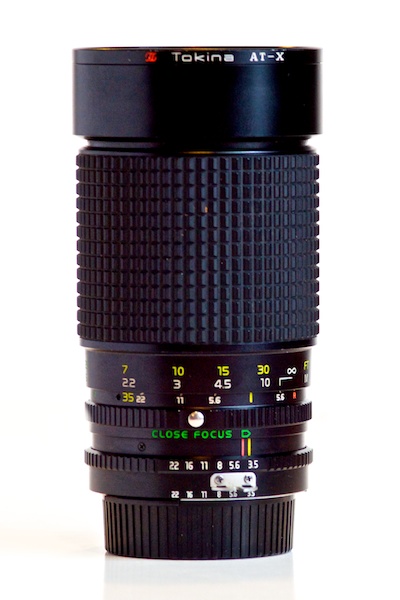
On the Pentax Forums, in a reply to a “Anybody know anything about this lens” post dated August 30, 2012, user RKKS08 asserts “…the first AT-X version was introduced in 1982 at about $430 US list price. There probably was a SD version before.” RKKS08 goes on to say “It is very ununlikely they didn’t change the optical formula and the coatings several times over the last 30 years. The more, as I know there exist(ed) Tokina SD, SZ-X, AT-X, and AT-X Pro versions of this lens. Just 2 years ago they introduced an AT-X Pro version (AF, Canon mount), which got fairly good reviews in German photo magazines.” RKKS08 also provides a link to a german lens review site; unfortunately, that site is now defunct.
Here’s a short list of a few interesting references to this lens that I’ve come across as of November 4, 2012:
- Martin Rodensjo took one of these lenses apart, and was kind enough to share a gallery of images of the process.
- Robert Monaghan‘s oft-referenced Cult Classics lens page has gone missing, but is available through the WayBack Machine and as a pdf. Other than being listed as a “Cult Classic,” there is no specific information on the 35-200.
- There are a few pictures and some comments on a post at dyxum.com, but much of it applies to the later (presumably) f/4-5.6 version.
- The Tokina also shows up in an un-dated review/endorsement of Tamron’s 35-210mm f/3.5-4.2 at adaptall-2.org. “[The Tamron] provides better optical performance compared to Tokina’s very popular AT-X 35-200 F/3.5-4.5 zoom lens. Although the Tokina lens was slightly more compact and weighed less, you can definitely discern the differences in the machining tolerances between the two lenses when zooming and focusing. Both lenses exhibit zoom creep when the lens it tilted either up or down, but it takes far more tilt (75 degrees from the horizontal with the Tamron versus 45 degrees with the Tokina) before zoom creep with the Tamron becomes an issue. In a nutshell, the less expensive Tokina lens offered decent performance for the average photographer while the more expensive Tamron lens (with tighter machining tolerances combined with a superior optical design) had better optical performance which met the higher expectations of discerning photographers.”
I told you it was a short list. (Also, by the way, “very popular?” Why, then, has so little information survived or made it onto the interwebs?)
What I like about the Tokina AT-X 35-200mm
Well, given that I paid roughly $40 for it (including shipping), I suppose I can’t complain… much.
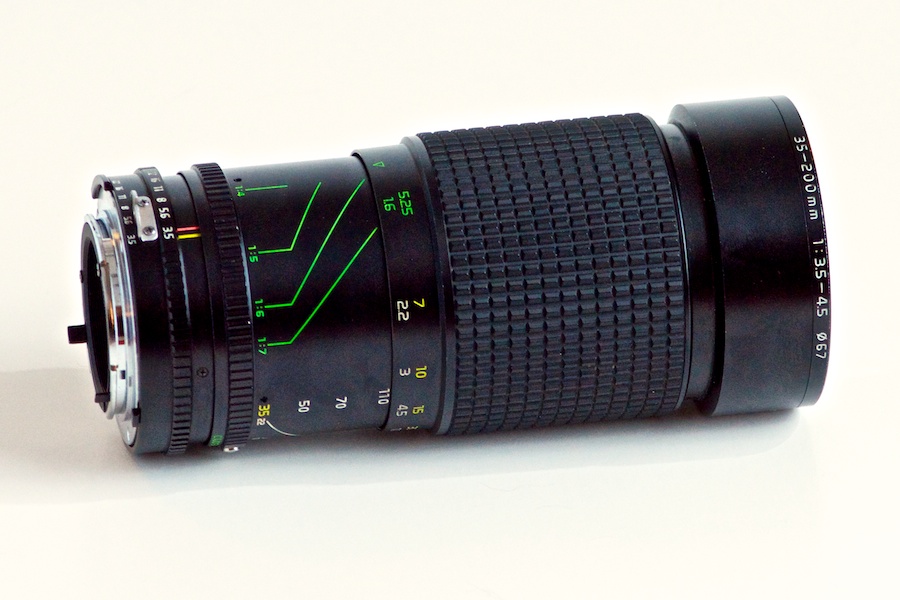
Here’s a short list of the things I like about the Tokina:
- it has a nice-enough range (though I wish it went a bit wider), going from ~52.5-300 on my D7000
- it has an aperture ring
- f/4.5 at 200mm is at least ~2/3 of a stop wider than similar variable aperture lenses from all eras
- it’s mostly metal and has a nice heft to it
- it takes 67mm fliters (I only like this because the Vivitar also takes 67mm filters, thus obviating the need for step-up rings, but still…)
- it was Made in Japan (for what it’s worth)
- t has a really easy and wildly useful close focus mode: push a release button, spin the lens around, and poof it will focus down to 1:4 at about 3 inches from the front of the lens
- it cost me less than a trip to the grocer
- it reproduces colors and contrast in a unique way that has some artistic merit in certain situations
However, if I have a choice between the Tokina and pretty much any other lens in my arsenal, guess what? It usually stays on the shelf unless I have a specific need for it.
Suffice it to say that the lens has a few problems.
The Drawbacks
1) as expected, you’ll find barrel distortion at 35mm, pincushion distortion from ~50mm to ~150mm, and mustache distortion from 150-200mm. If I was a Ken Rockwell sort of lens reviewer, I’d give some notes on how to fix the distortion in Photoshop. Alas, I’m not a Ken Rockwell sort of reviewer, so here are some examples:
This really isn’t a huge problem, as long as you’re not shooting wooden fences or brick walls or putting any horizontal or vertical lines near the edges of your pictures, and it’s completely expected from any lens of this type.
2) the focus changes while zooming. Drastically. So if you get all focused in on a your subject at 200mm, and then zoom out a bit to capture some surroundings, you’ll need to focus again. The more you zoom out (or in) after focusing, the more out of focus you’ll be.
I missed a handful of decent shots before I figured this out.
And it doesn’t help that the lens exhibits a fair amount of zoom creep at even the slightest tilt out of horizontal.
3) The Flare, Oh My God The Flare. Suppose you’re shooting outside during the day. If you want to avoid flare, make sure the sun is behind the front of the lens. I mean, really behind; maybe not 180°, but pretty close.
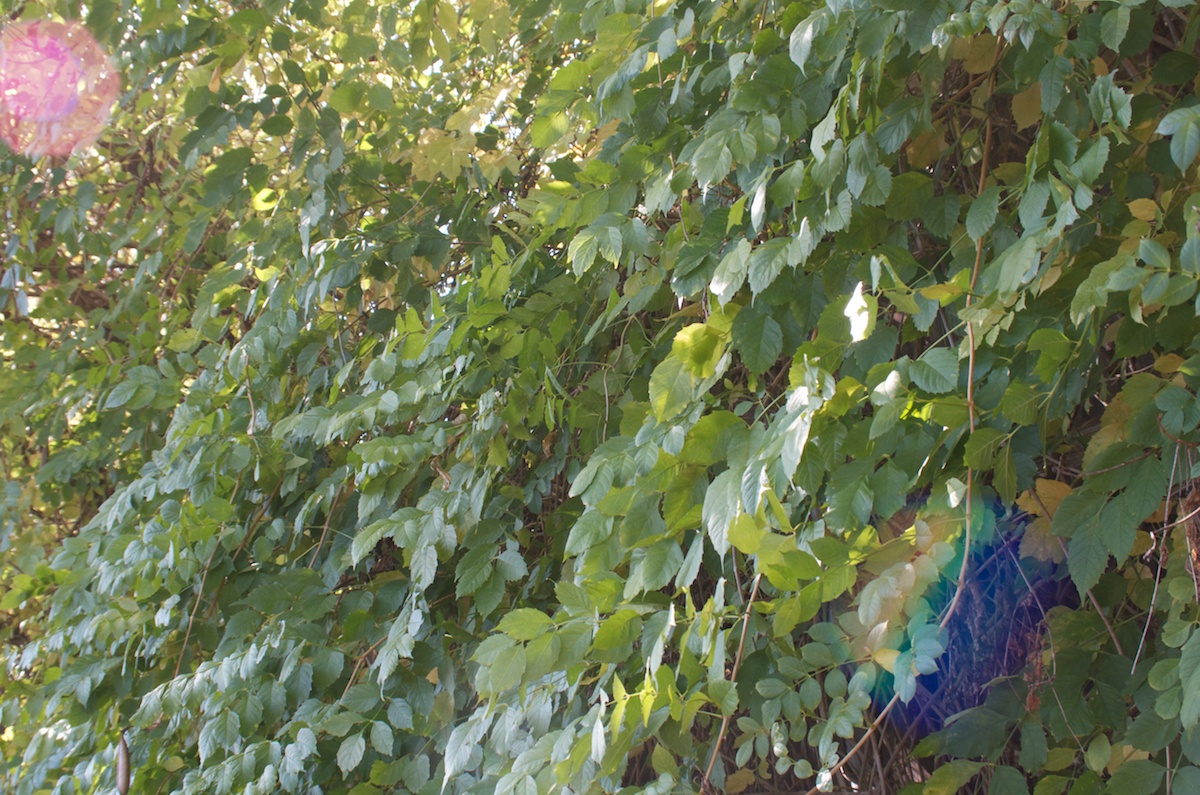
I really don’t know how to explain this properly, but here it goes:
At 35mm on a 35mm (or full frame digital), the angle of view is 64°; on a crop-sensor, this falls to ~45°. In my experience, the sun needs to be outside of an area at least equal to the angle of view. So if your subject is at 0° and you’re covering 22.5° on each side of the subject, the sun needs to be another 45° outside of that (or at 67.5° or greater) or you’ll get flare.
And this range holds for every focal length, not just the wide end: even at 200mm, you’ll need a good 70° of clearance between the edge of your frame and the sun to avoid flare.
(Does this make sense? A diagram would probably help, but I’m feeling lazy…)
In this shot, the sun was a good 40° out of the frame. Sure, the rainbow blob in the lower right is nice enough, and I know this picture wouldn’t win any awards, and, of course, flare can be employed to nice artistic effect, but still: this is a bit excessive.
This can be mitigated some with a lens hood. I have a collapsible rubber one, but I usually forget to attach it before I go out shooting, and no other lens—even the Vivitar 70-210mm f/3.5—really needs it to the extent the Tokina does.
And the flare totally washes out the image on the Tokina. Other lenses produce some ghosts, or some pretty flare bubbles, but the Tokina just converts the scene to monochrome.
4) it’s very soft wide open, soft enough that I find it mostly impossible to find the green dot at any focal distance, but especially at infinity, and soft enough that nothing is sharp wide open. Sharpness improves, though, and by f/8 it’s sharp as tacks in the center, but still slightly soft in the corners (and remember, I’m shooting this on a camera with a 1.5x crop factor). [I illustrated this back on November 4, 2012, post “365.312 it’s sharp after all!.”]
I imagine this softness would make for some decent portraits, and I’ll try to find a subject on which to test this theory. (Don’t hold your breath…)
5) everything is backwards. Nikon lenses find infinity by turning the focus ring to the right. Canon, Olympus, Pentax, and others all have infinity on the left. So most third party lenses for Nikon (especially manual lens) have this same focusing issue.
I solve this (h/t Ken Rockwell) by imagining that the little green focus arrows in the viewfinder are instructing me which way to turn the bottom of the lens barrel. It’s still a bother, but I tend to get used to it after a couple of minutes, and happily go about the rest of the day.
But that’s not all that’s backwards: it zooms backwards too.

With a Nikon push/pull type zoom, you pull in to zoom in, and you push out to zoom out. On the Vivitar 70-210mm f/3.5 Series 1, you pull in to zoom in and you push out to zoom out.
It’s easy to remember: pull in=zoom in; push out=zoom out.
On the Tokina, though, it’s backwards: push the lens out to zoom in; pull the lens in to zoom out. This trips me up constantly, and is a real bother.
6) (and this is the deal breaker, for me… mostly) the color reproduction is washed out, at best, and the contrast is flat. These are both easily remedied in post, but I get better results straight out of the camera with pretty much every other lens on the shelf.

It’s simply an issue of time: with any other lens, it takes anywhere from 30 seconds to 4 or 5 minutes to process a picture for the 365 project, or to share to the interwebs; pictures from the Tokina require at least 2 minutes of post work, and the other good qualities of the lens will never beat this out, for me.That said, there are occasions when I like the rather flat contrast and unsaturated color, and given that this is the closest thing I have to a proper super zoom lens, I’ll keep it on the shelf, albeit nearer to the back than others.
I have a few other complaints, but they’re relatively minor: annoying and largely useless half-stop clicks on the aperture ring; and (on my copy) the zoom is rather sticky, which makes very hard to move out of some focal lengths and nigh-on impossible to focus in Macro mode with any accuracy.
Thoughts: tl;dr version
- barrel distortion (wide); pincushion distortion (~50-150mm); mustache distortion (tele)
- focus changes drastically when zooming
- extremely flare prone
- very soft wide open, soft enough that the D7000 computer has difficulty focusing when it’s wide open
- focus and zooming are backwards on Nikon
- saturation and contrast are sadly lacking
Advice
If you find a clean copy of this lens (mine has a tiny bit of mold and a chip in the front element, neither of which cause many issues) in a pawnshop or online for less than $30 or $40, shipped, and you want a manual focus super-zoom-ish lens for FX (or normal-tele zoom for DX), and you appreciate the artistic merits of funky old manual lenses (I should write something about this one day…), and you have the money to spend, buy it.
Otherwise, save up your money and get one of the modern lenses, especially for DX. (Note: I have no experience with other super-zoom type lenses, but I have every expectation that the newer offerings from Nikon, Tamron, Sigma, et. al. are quite a bit better optically, if a bit more cheaply made and less able to produce artistic effects.
So there you have it: my review of the Tokina AT-X 35-200mm f/3.5-4.5! Below, you’ll find some sample images, mostly outtakes from various 365 shoots. (I had to hunt far and wide to find even 7 pictures worth sharing that haven’t already been featured in one of the various 365 posts that feature the Tokina). Most of these were shot wide open in Aperture Priority mode on the D7000 (and probably at -1EV, as that gives the best results with non-CPU lenses in my experience), as I tend to do, and so don’t look too closely, and most received 2-5 minutes of slider play in Aperture.
I hope you found this interesting and/or useful! I had fun making it, for sure, and apologize for taking so long to push it out. I think I’ve been promising this review since April or May…
And this being my first real, in depth lens review, I hope you’ll have some comments or suggestions to help me improve. And if you have any questions, please throw them out there. I’ll be glad to answer them. (Comments are screened prior to posting, FYI.)
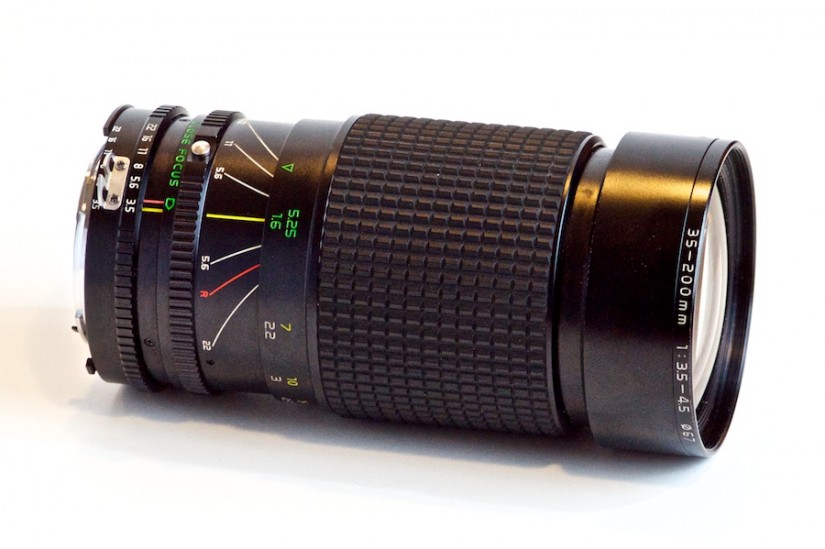
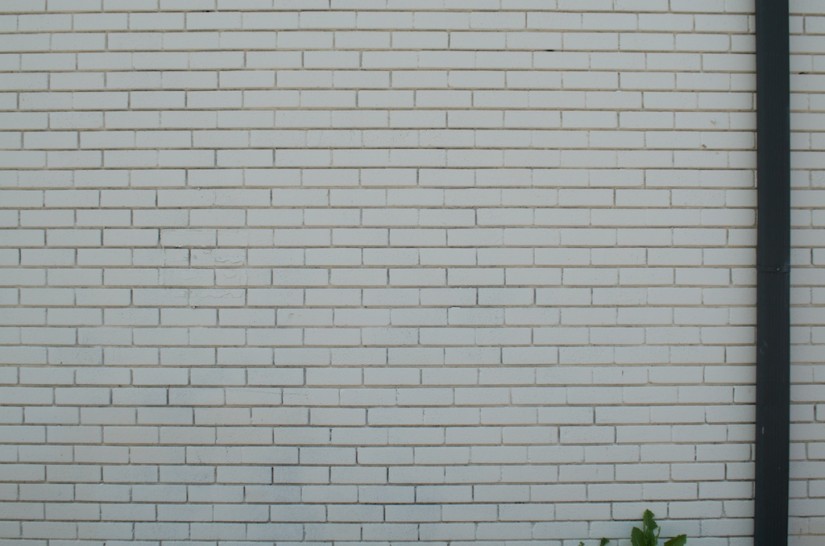



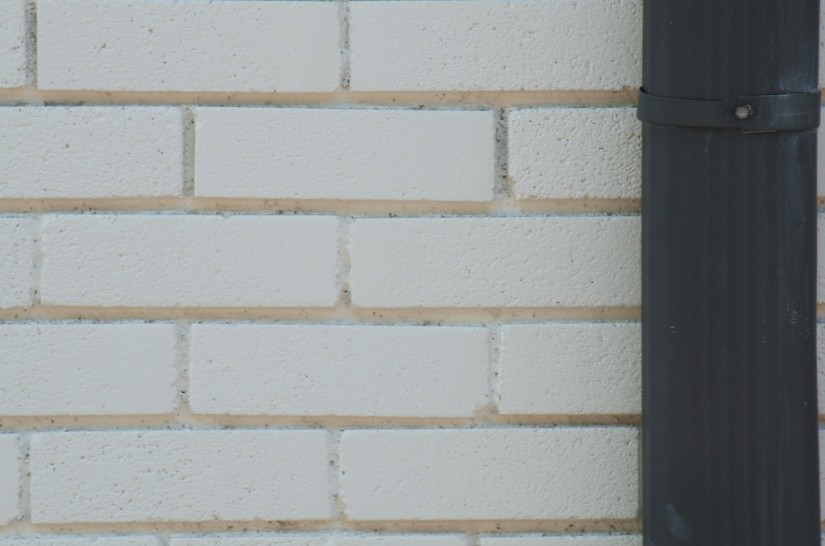
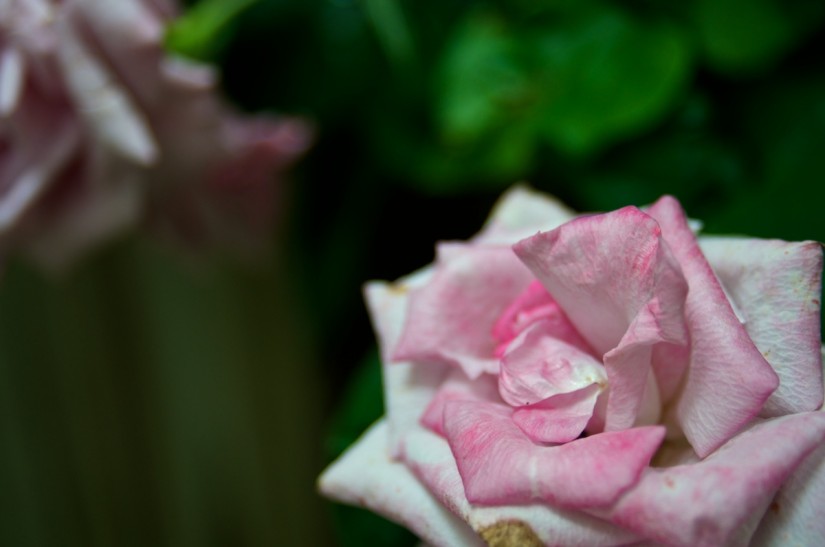

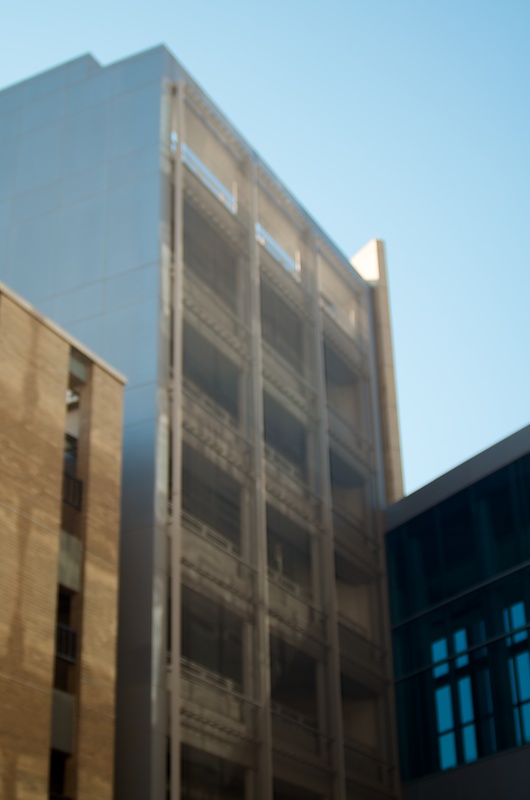
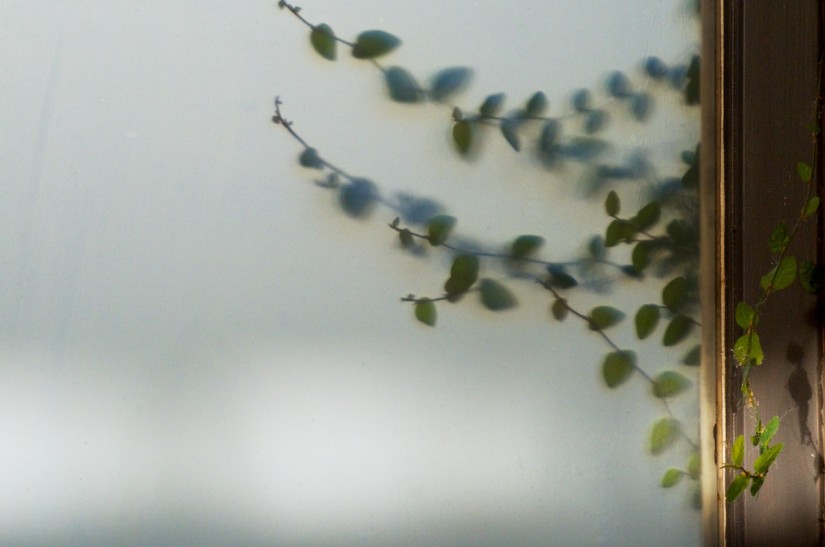

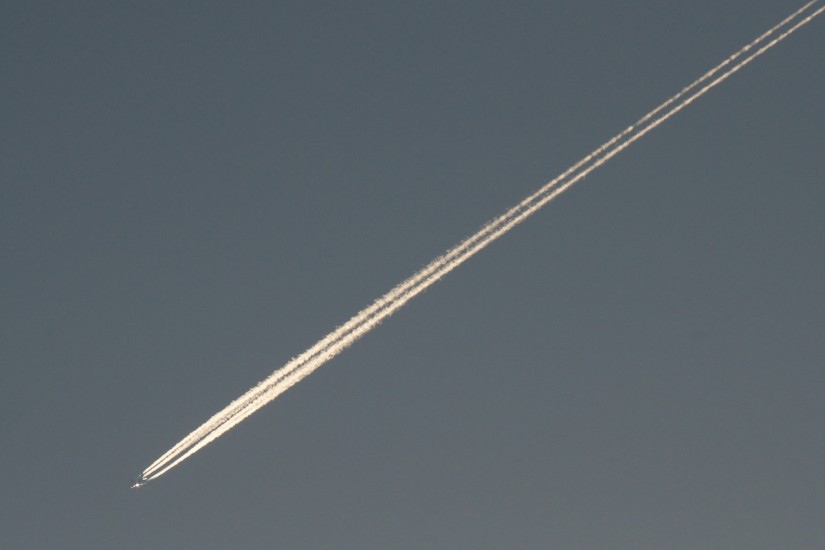
Internet says 35-200mm AT-X f3.5 lens is made in Japan. Mine , from the 1980s, is stamped Germany. Did Tokina have a plant in Germany or sub-contact some lenses there?
I got mine for E7,50 last month, so no complaining here. I didn’t get to use it until yesterday though.
You’re absolutely right about washed out colours, but one push of a button fixes most of it. Photos taken with this lens show the most improvement, it’s that bland.
Getting a crisp. sharp image is more of a challenge, it’s my first all manual lens so before any decent lit picture can me made eggs have hatched and joined the flock heading south….
But I’m learning, in fact I grabbed a few prime m42 lenses to get more manual practice. ( just scored a 28mm f2.8, some tubes and an undercover Carl Zeiss 50mm f2.8 (branded “aus Jena DDR”) and some more than decent f1.8 / 50mm’s and f2.8 / 135mm’s.
I like this tough Tokina in a way, I have a better and lighter Tamron af 28-200 as an allrounder, but this feels like a real lens. Sure it startles people, there’s nothing subtle about walking around with this dangling on your belly- no zoom creep btw.
One thing; don’t clean it. It’s tougher than a Rubick’s cube to piece it together again. I wanted to get some milky film off one oi the middle lenses and before I knew it I had opened the diaphragm. Piecing that together and then inserting it the right way cost me about a week or a year in patience, and some more days and swearing to get infinity focus. It’s a solid lens once again, no rattle, tight zoom ( did I mention I took apart the nifty helicoid as well?) and looking as new as ever. Just don’t check the lenses, if you do use a torch you’ll see an endless row of dustcollecting pieces of glass, no wonder images are less than crisp.
But; it will survive me and if this lens was on the tripod you knocked over your review would be about restoring floor panels.:)
ciao, thanks for the review!
Thanks for your review. I have been this lens too and I’ve have a few issues with this lens, but mainly ans foremost is the washed colors and lack of contrast, I have the Konica version and I use it with a Sony A5000.
Because of the underwhelming results I got instead a Tamron adaptall 2 80-200 f3.8 and straight away you can tell the difference. After I made all the comparative shots I realized that the Tokina had a Skylight filter and the Tamron didn’t, I don’t know if that’ll we’ll make such a difference but I’ll do a second test and report back.
Thank you for doing this review.
I have a Nikon D7100 and I just got this lens what kind of mount or adapter do I need to buy to make it fit to my D7100 camera?
It depends on what version of the lens it is.
Tokina made that lens with many different mounts: Nikon F mount would fit your D7100 with no problem, but they also made versions with the Minolta MD mount, Pentax K mount, and Canon FD, and maybe more. Look at the lens mount: it might be marked. I’ve seen C/FD on the Canon mount versions, and the Nikons have ‘N/AI’ stamped into the metal.
But if you have one with a different mount, I suggest you donate it to charity and pick up a Nikon version if you can. They’re cheap lenses and you should be able to get one for $20 or less. And, anyway, it’ll probably be cheaper to just buy a Nikon mount version, rather than messing around with an adapter, and with adapters, you may not be able to get infinity focus. Nikon has a longer flange than most other manufacturers and the physics get all messed up.
Hello James,
Recently I was given a Tokina AT-X 35-200 mm f3.5-4.5 with a breech lock Canon FD mount.
The lens has a blurry and gray image when looking through the viewfinder, when looking closer you can see the one of the elements looks like frosted glass.
I found another webpage about this problem:
http://www.geocities.jp/pxm0/tokina_at-x_35-200mm.htm
Use your favourite online translator
I have no such mold problem in my copy, but it’s wonderful to have a take-apart guide!
Thanks!
what adapted you used to fit it on your nikon
None… this sample has a Nikon mount.
Thanks for doing this lens test and interview. I have a lot of experience with this lens, and I agree with much of your review, especially regarding flare, but here’s the thing – I think this lens has a lot of quality variablity between mounts. My first copy was a $12 pentax k mount version from Ebay. It is an amazingly sharp and colorful lens with almost no Chromatic aberrations – which is rare for any lens of this vintage, let alone a 3rd party zoom. The out of focus areas are also pretty nice especially nearer the 200mm end. I have taken some of my favorite floral shots with this lens. The macro function is excellent and just takes a few moments to figure out.
However, I have more Minolta lenses than Pentax, and it was getting annoying switching adaptors, so I found a Minolta version and bought it online for about $15. I used it for a while, but gradually just stopped enjoying it and shelved it, thinking I must have overrated it before. Yesterday I took out the PK version and did a head to head test between the 2. There was no contest at all, the Pentax version was incredible – as I had remembered it to be – and when I took matching test shots with each, especially wide-open, the differences were stark. The Minolta version was really blurry and diffracted looking wide-open, while the PK was clean as a whistle. Neither of them appear to have been worked on previously, and neither have any blemishes, fungus, etc. So either: there is a wide-range of quality-control, or quality changed over time and I have 2 different years lenses, or the different mount versions give different results. If you are a vintage lens guy, I strongly recommend this lens in the PK mount if you are looking for a wide range zoom for ridiculously cheap and with high quality construction.
These are a couple of shots I took today with the lens handheld on my Olympus OMD e-m5
http://www.flickr.com/photos/aerogami/8697002057/in/photostream/lightbox/
http://www.flickr.com/photos/aerogami/8698088080/in/photostream/
And big thanks to Mark and Ramesh for leaving comments! I didn’t realize that the recent theme change had broken a bunch of images! I think it’s fixed now, on this page anyway, and please, if you see something that looks broken, please let me know! I hate to look so wholly incompetent. Apologies to all those who visited this post and found broken images.
I can’t believe someone took the time to write such a thoughtful review of a 30 year old lens that they bought for $30. I have an olympus mount copy that has been sitting in a closet for over 25 years. I had to stop using it because it seemed to start interfering with the mirror of the olympus om that I bought it for, and the shutter wouldn’t trip. I was considering whether to buy an adapter for a micro four thirds camera and bring the Tokina out of mothballs when I came across your review. Thanks for a great article.
I’m happy you found the review and thank you for taking the time to leave a comment!
When I was contemplating purchasing this lens, I couldn’t find any much useful information on it, so I thought I’d toss a review out there so other people wouldn’t have to look so hard to find info. Given that this is far and away the most popular post on my site, perhaps I should do some more work on old lenses without much web presence!
So did you decide to take the Tokina out of mothballs? It could be fun… maybe.
Hello i have tokina 35-200mm AT-X f3.5 lens i bought it when it came out new many years ago can i use this lens on Canon EOS 6dPlease let me know I was using this lens on Canon AE-1 Program camera
I have no real idea about Canon cameras, but a check of the history of Canon mounts suggests your lens is likely an FD mount, while the 6d accepts only the newer EOS mounts. There are mounting adapters available that will convert an FD lens to the EOS mount. Perform a web search for “fd-eos adapter” and you should find many results.